Look, but don’t touch. The prevalence of visuality is one of the things that defines us as human. Nearly 70 percent of sensory cells in our bodies relate to vision. We size someone or something up in a glance. That’s all it takes. But vision is a very ‘commuting’ sense. It is taken at a distance, always slightly removed from its focus. Could there be something to the very tactile way that blind people, at least in the movies, see? Tactility. The hand runs over a surface and something ‘flat’ reveals itself to be porous and rough. Sight can deceive us until our electrons bump against something else’s electrons and a map is formed in our tactile eye.
This thing made of many tiny flagella that rides the gap between surface,cloud, solid,open, seen and felt, is the inhabitable art installation Anemone, built in Taipei by Oyler Wu Collaborative. It is art that is meant to be touched, felt, inhabited, moved through, dwelled in, and also looked at.
Anemone could be said to have a depth of 2. Its form is such that it encourages human interaction, folding over, crating a slip-through space. But the design intent is carried a step further (the second depth) to the materiality, the very essence of what makes the volume of space that is the form. Tens of thousands of flexible, transparent rods create an undulating surface- enticing occupants to reach out and touch. It brings to mind the great amount of empty space that makes up atoms (cue memories of high school physics). The result is that the way Anemone is used makes the art just as much as how it is viewed .
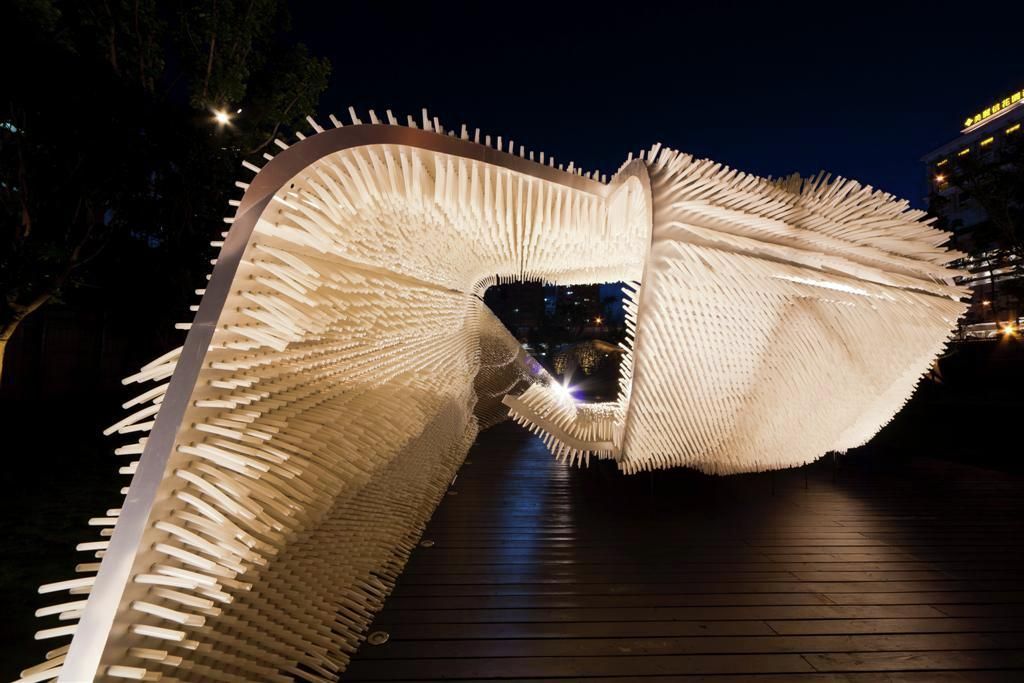
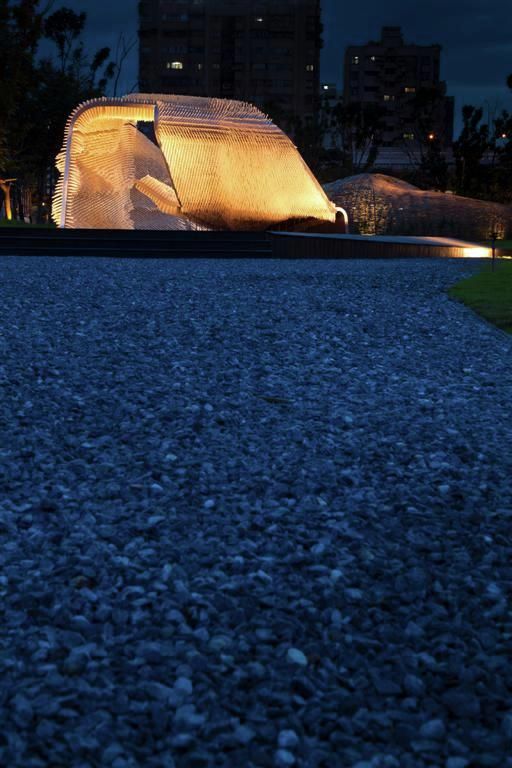
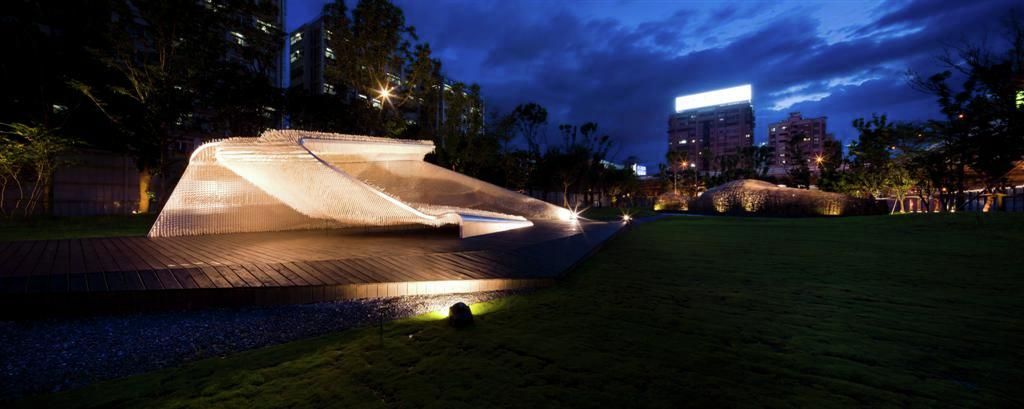
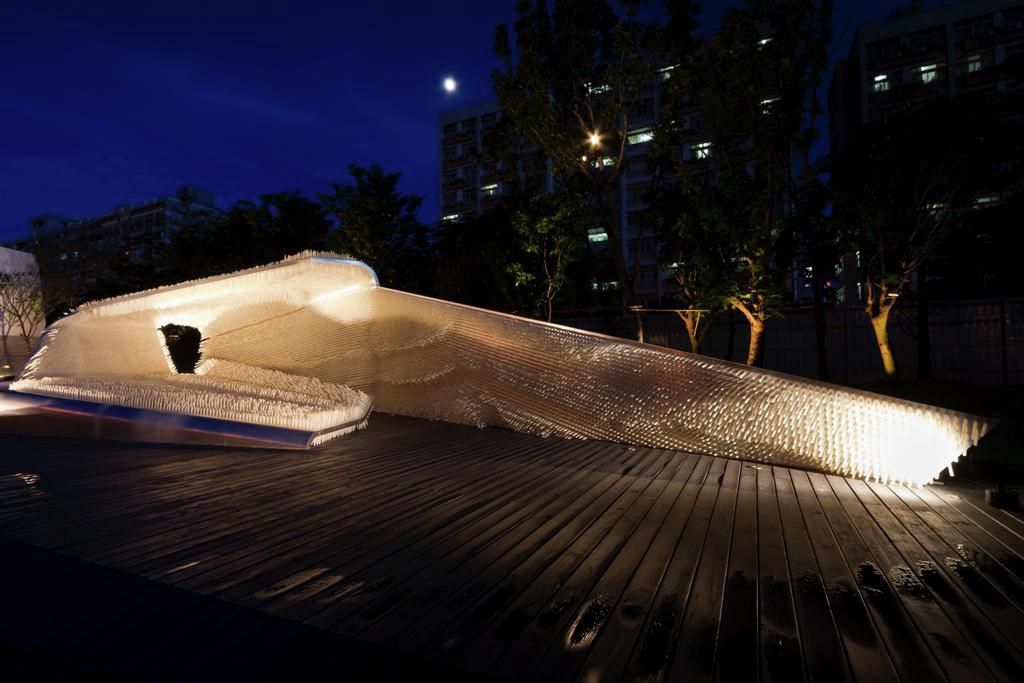
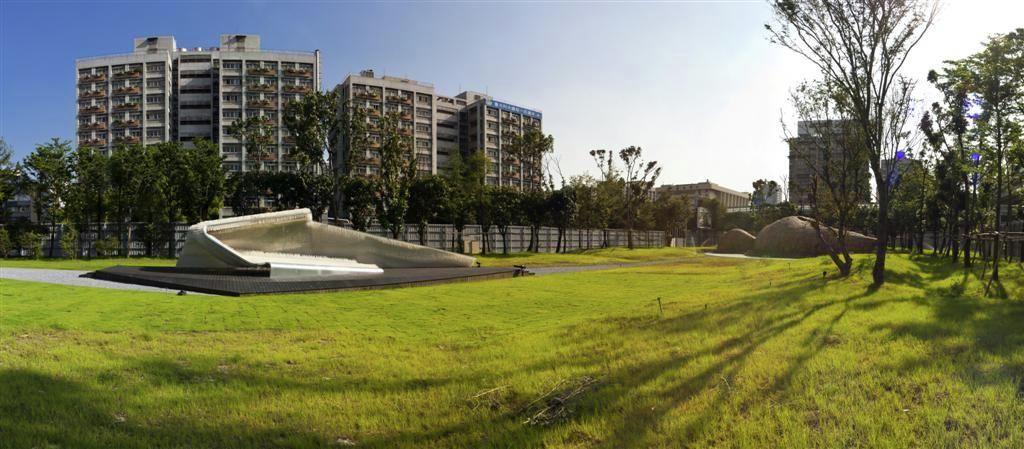
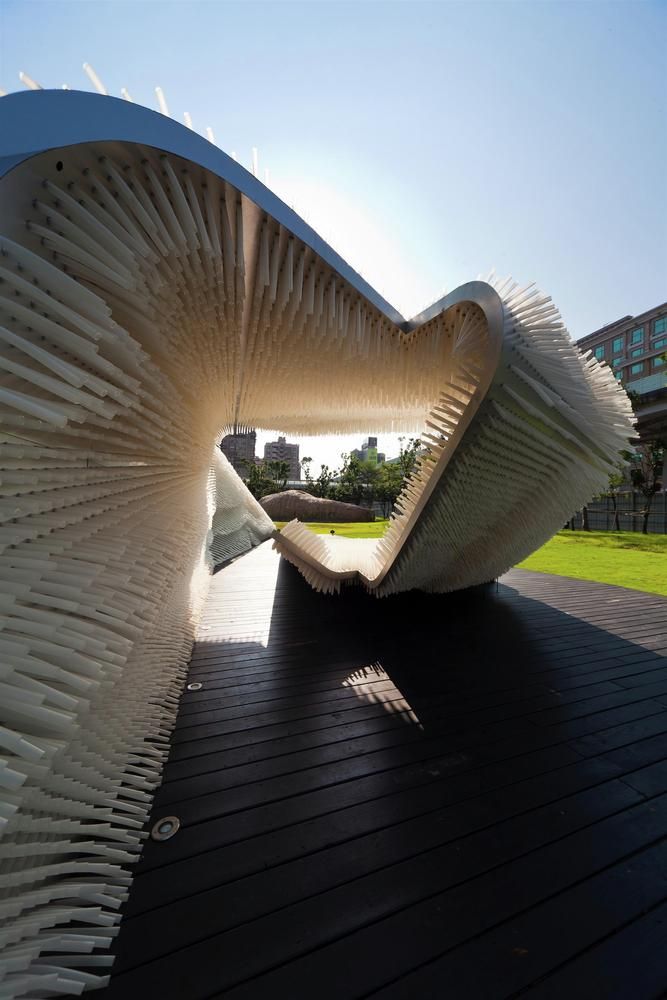
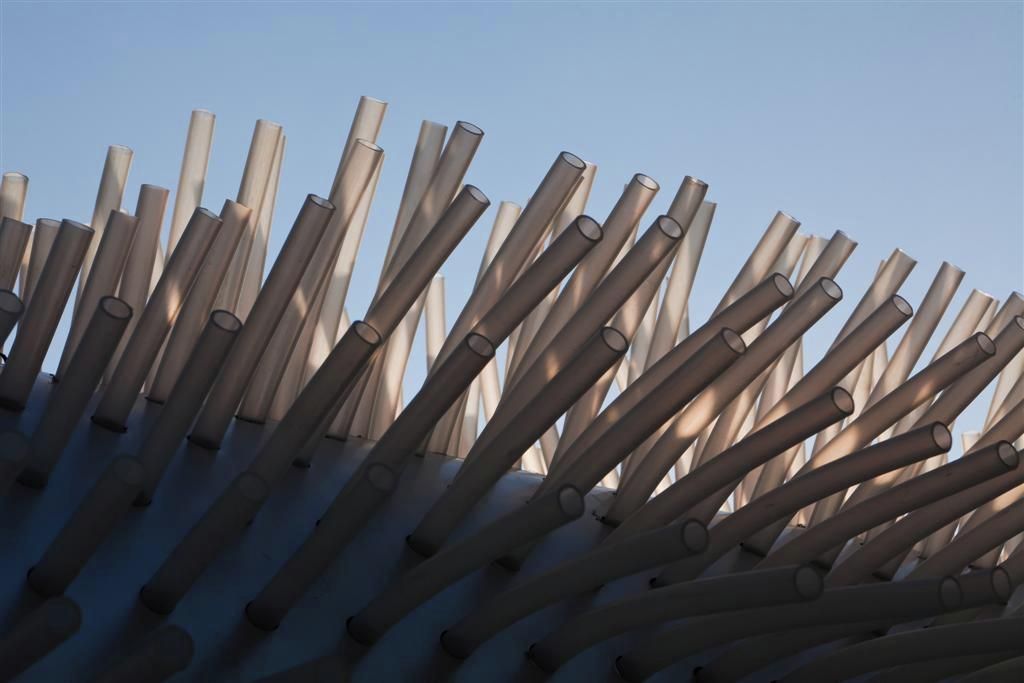
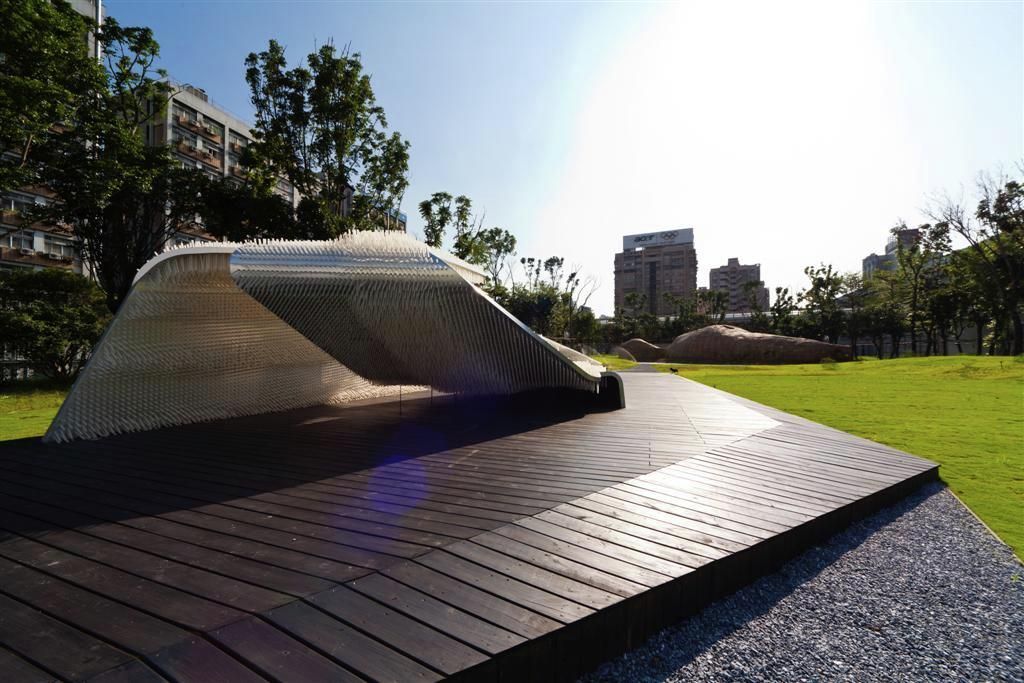
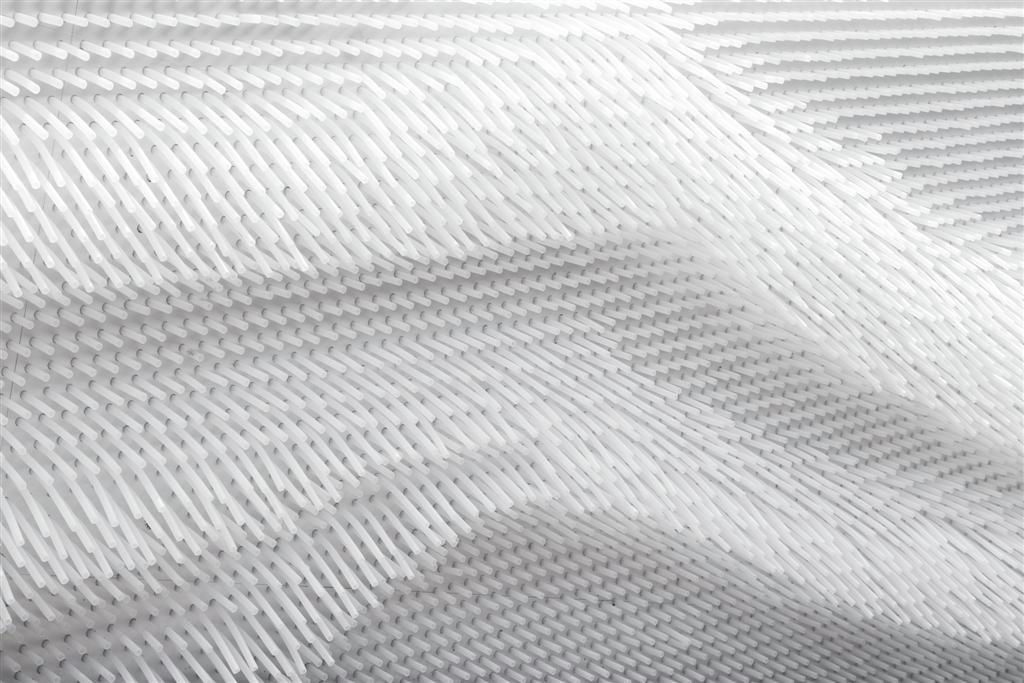
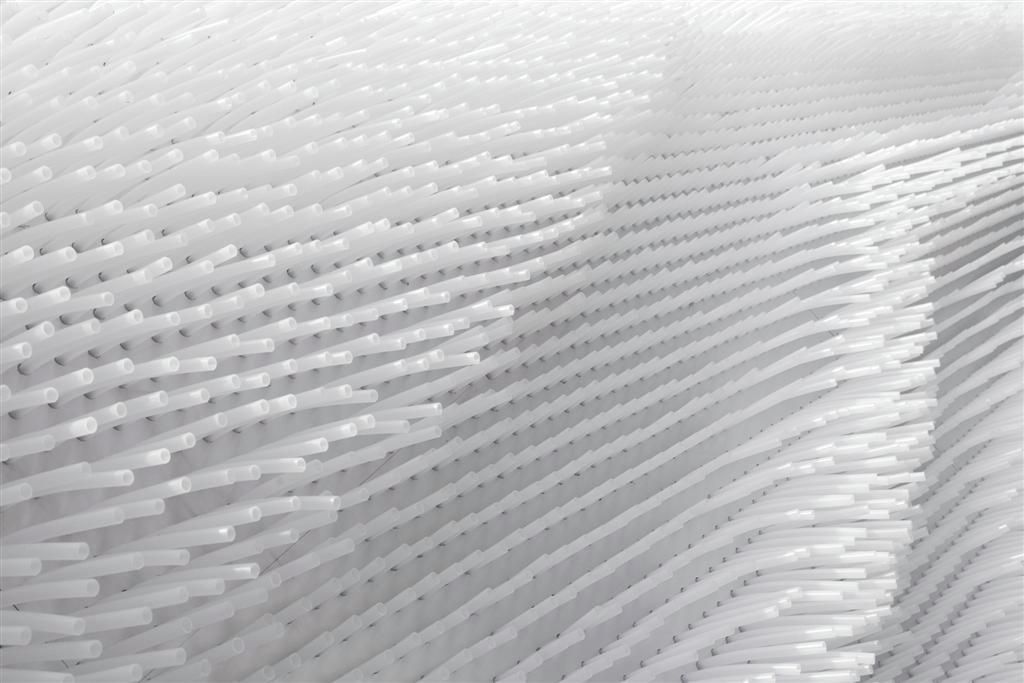
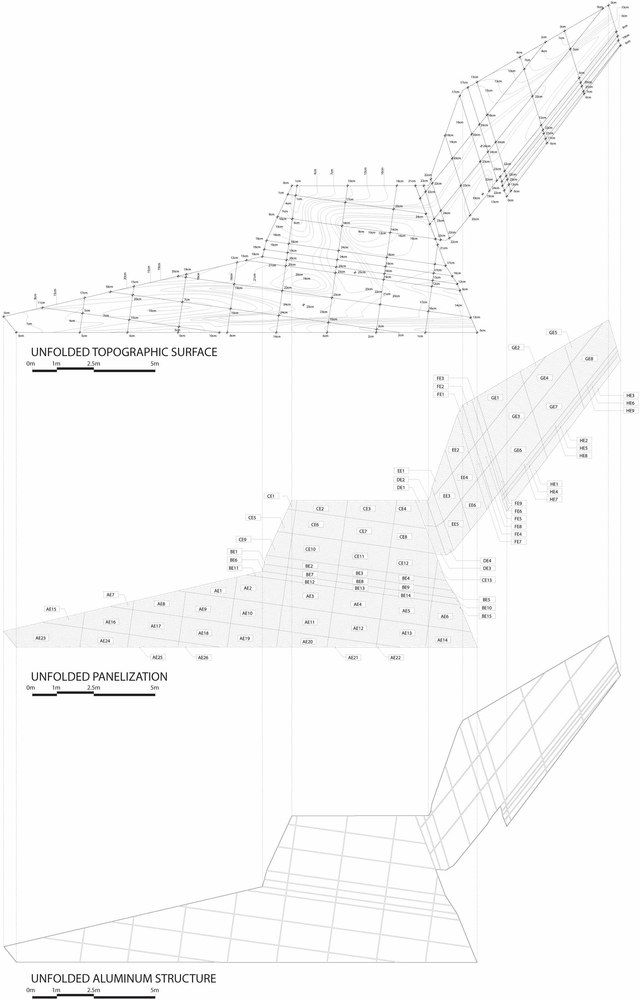
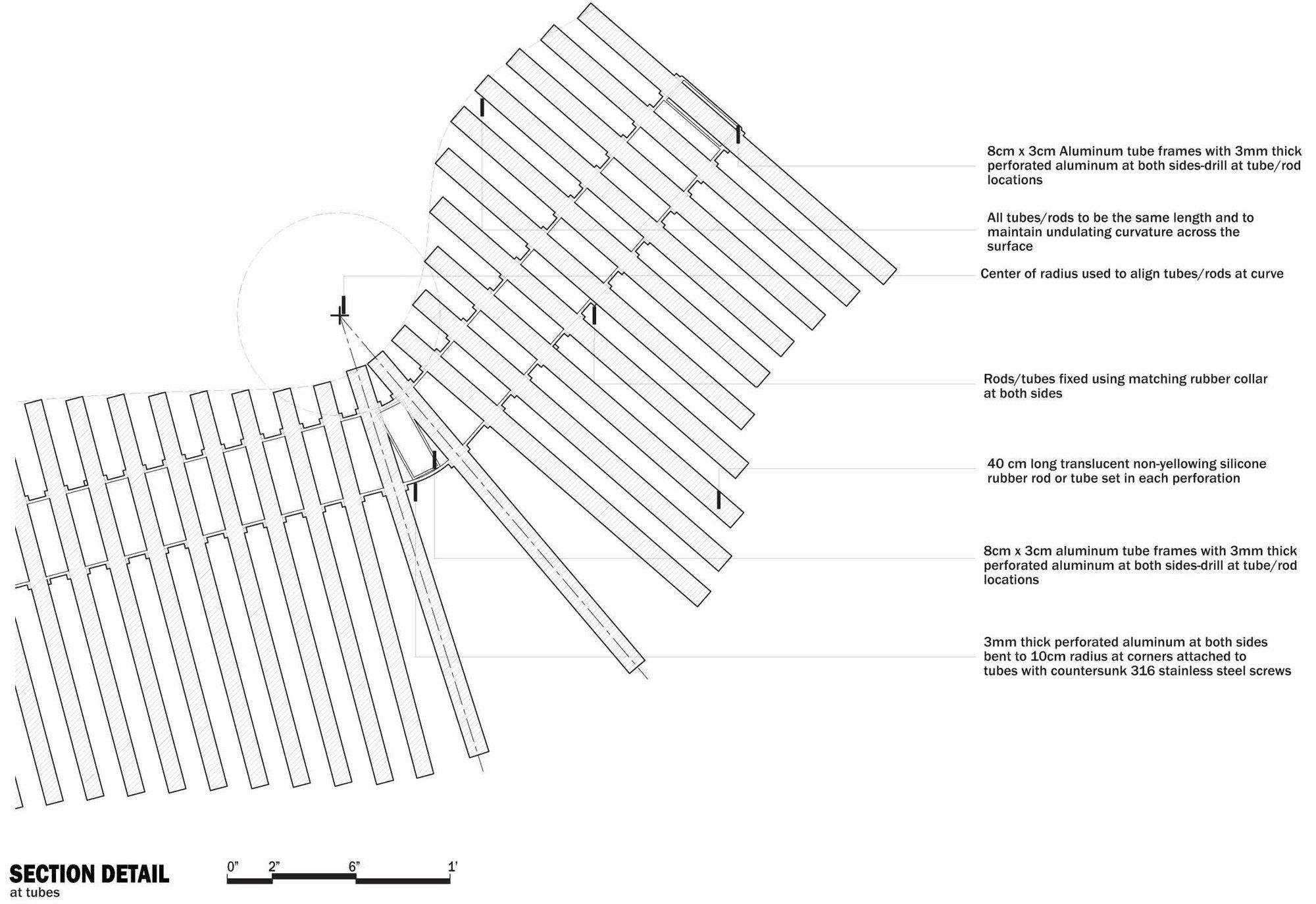
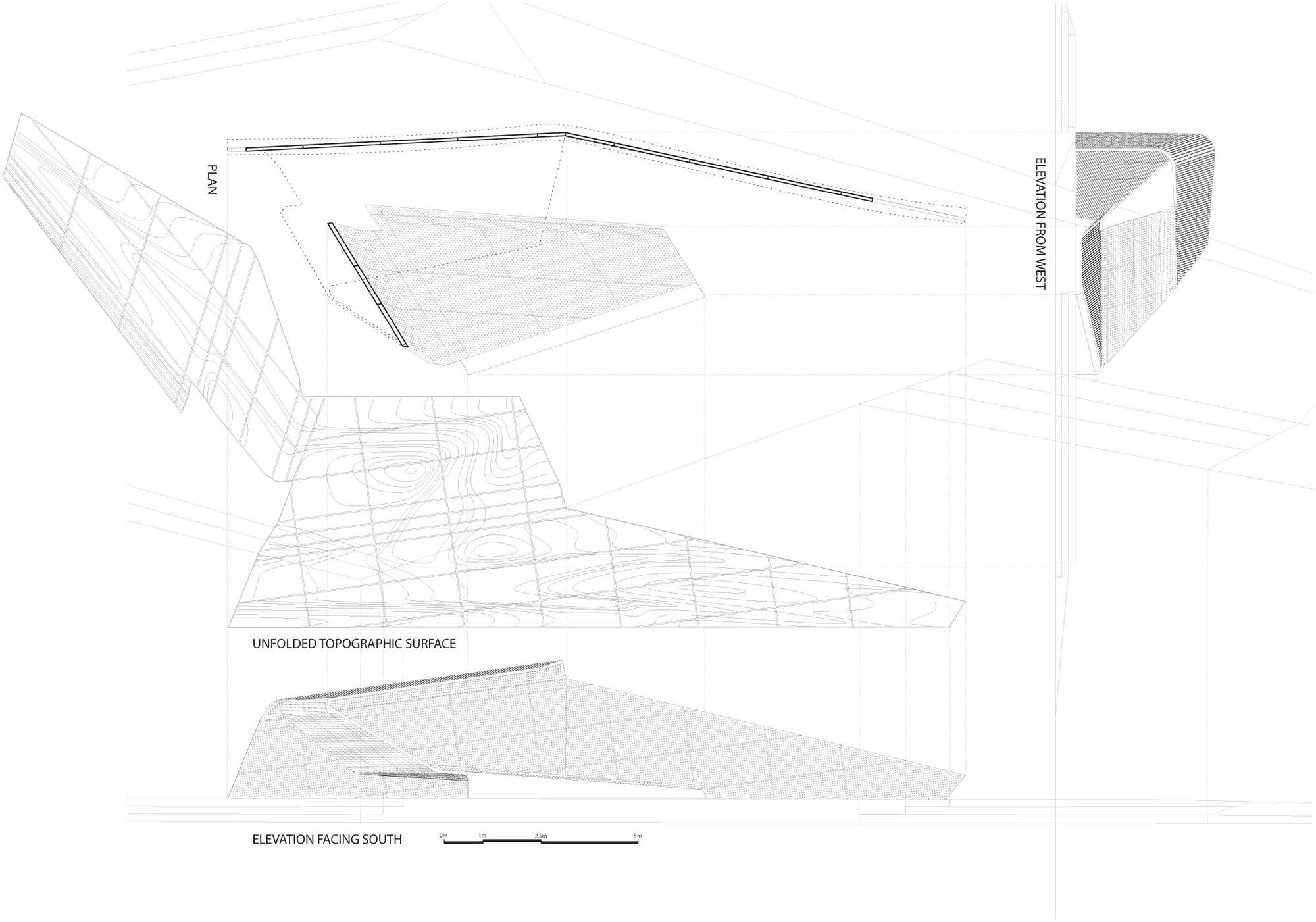
© Courtesy of Taipei by Oyler Wu

